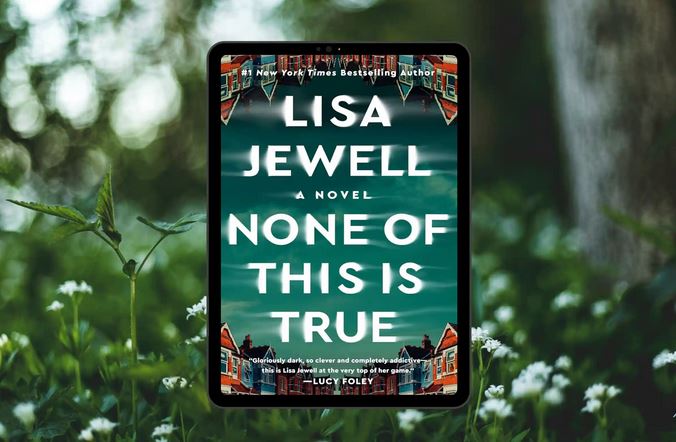Introduction to the concept of
In a world overflowing with information, it’s easy to feel lost amidst the noise. The phrase “none of this is true ending” resonates now more than ever as we navigate through layers of subjective truth and differing perspectives. Our perception of reality can shift dramatically based on our beliefs, experiences, and even the media we consume. Join us as we embark on an exploration that dives deep into how subjective truths shape our understanding of the world around us. Prepare to uncover insights that might just change your perspective the none of this is true ending.
Exploring the idea of subjective truth and its impact on our perception of reality
Subjective truth shapes our individual experiences. It’s the lens through which we interpret events and feelings. Each person carries a unique set of beliefs, influenced by culture, upbringing, and personal interactions.
This perspective shifts how we perceive reality. What might be true for one could seem utterly false to another. This dissonance can lead to misunderstandings in communication and relationships.
Consider social media’s role—it amplifies subjective truths while often blurring the line between fact and opinion. A single event can spawn countless narratives, each colored by personal bias.
These variations create an ever-evolving landscape of reality. The stories we tell ourselves become our truths, impacting decisions and connections with others around us. Embracing this complexity allows for deeper empathy but also challenges us to navigate conflicting viewpoints thoughtfully.
The role of media and technology in shaping our understanding of truth
Media and technology play a pivotal role in how we perceive truth today. With every scroll, swipe, or click, we’re bombarded by information that often blurs the line between fact and fiction.
Social media algorithms prioritize engagement over accuracy. This means sensational headlines can overshadow truthful reporting. Misinformation spreads like wildfire in this environment, creating echo chambers where only certain views are validated.
Moreover, deepfakes and advanced editing tools challenge our ability to trust what we see. Visual proof is no longer a guarantee of authenticity; it’s merely another layer of manipulation.
As news outlets compete for attention, the urgency to publish quickly often comes at the expense of thorough verification. The result? A landscape where skepticism is essential but can lead us into an overwhelming fog of uncertainty about what’s real.

Examples of how
Consider a viral news story. It spreads rapidly, captivating millions. Yet, upon closer inspection, the details unravel. Eyewitness accounts clash with video evidence. What seemed like absolute truth morphs into something far murkier.
Think about social media influencers shaping opinions daily. They share snippets of their lives—curated and polished versions that may not reflect reality. Followers often buy into these narratives as truths without questioning their authenticity.
Art can also blur the lines of what is genuine. A thought-provoking film might convey a powerful message but does it depict an accurate representation? Audiences grapple with fictional worlds while reflecting on their own realities.
These examples highlight our struggle to discern fact from fiction in various contexts, leaving us pondering: how do we define truth when so many perspectives exist? The landscape becomes increasingly complex as technology continues to evolve.
Analyzing the consequences of believing in absolute truth vs relative truth
Believing in absolute truth can create a rigid worldview. It often leads to conflict, as differing beliefs clash violently. When one side holds steadfastly to its version of truth, it dismisses other perspectives entirely.
On the flip side, relative truth offers flexibility. It acknowledges that multiple viewpoints exist and are valid in their contexts. This approach fosters understanding and empathy among individuals with contrasting experiences and opinions.
However, embracing relativity can also breed confusion. If nothing feels definitive or concrete, navigating moral dilemmas becomes challenging. People may struggle to discern right from wrong when every belief seems equally plausible.
The tension between these two concepts influences society profoundly. Our political landscapes shift under the weight of these ideologies. Communities fracture over differing truths—a reflection of how deeply personal perceptions shape collective narratives.
Ways to navigate through a world where
Navigating through a world where subjective truths often clash with perceived realities requires a nuanced approach. First, it’s essential to cultivate critical thinking skills. Question the information that comes your way. Don’t take everything at face value; dig deeper into sources and motives.
Practice active listening when engaging in discussions about truth. Everyone has unique experiences shaping their beliefs, and understanding these perspectives can lead to richer conversations. It’s also vital to remain open-minded while holding onto your own principles.
Leveraging technology wisely is another key factor. Follow credible news outlets and diversify your media consumption to gain a broader perspective on events. This helps mitigate the echo chamber effect prevalent on social media platforms.
Establishing personal values grounded in empathy can guide you through complex situations where absolute truths may be elusive. Developing compassion for differing viewpoints creates space for dialogue rather than divisiveness.
Prioritize self-reflection as a tool for growth. Understanding your biases allows you to approach conflicts with greater awareness and humility—qualities sorely needed in today’s landscape of competing narratives.
In this intricate dance of belief systems and interpretations, finding common ground becomes both an art and necessity as we navigate our individual journeys toward what we perceive as truth.
